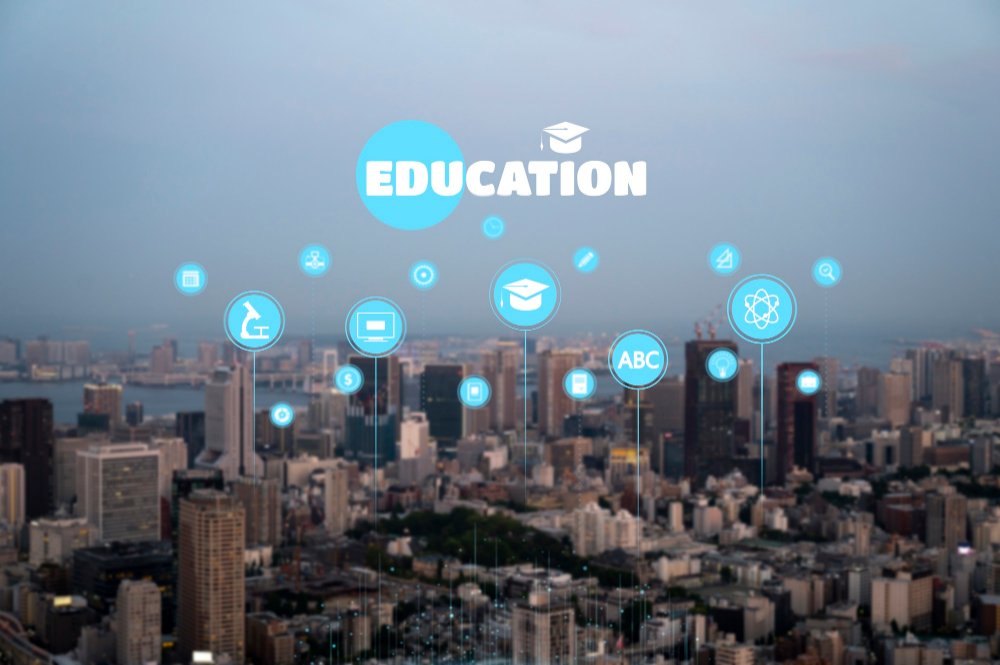Your Topics | Multiple Stories: The Integration of IoT in Modern-Day Education. The Internet of Things (IoT) has revolutionized numerous industries, and education is no exception. With the advent of smart devices and interconnected systems, IoT is reshaping how students learn and teachers teach. As platforms like Your Topics | Multiple Stories delve into these technological advancements, it becomes evident that IoT has a profound role in modern-day education, making it more interactive, efficient, and accessible.
This article explores the integration of IoT in education, highlighting its applications, benefits, challenges, and future potential.
Your Topics | Multiple Stories: The Integration of IoT in Modern-Day Education
Understanding IoT in Education
IoT refers to a network of physical devices connected via the internet, enabling seamless data exchange and automation. In education, IoT devices include smart boards, wearable technology, classroom management systems, and remote learning tools. These tools aim to enhance the educational experience by fostering engagement and simplifying administrative processes.
Applications of IoT in Education
- Smart Classrooms
- IoT-enabled smartboards allow interactive teaching by integrating multimedia content, real-time quizzes, and virtual collaboration tools.
- Environmental sensors monitor classroom conditions, optimizing lighting and temperature for better focus.
- Personalized Learning
- IoT systems track students’ learning patterns and suggest tailored content, ensuring that every learner progresses at their own pace.
- Smart learning platforms provide immediate feedback, helping students address weaknesses effectively.
- Remote Learning
- With IoT, students can access virtual classrooms, participate in discussions, and complete assignments remotely.
- Devices like connected cameras and smart tablets create an immersive learning experience, bridging the gap between traditional and online education.
- Enhanced Safety Measures
- IoT technologies, such as RFID tags, help monitor student attendance and ensure their safety within school premises.
- Smart surveillance systems provide real-time alerts to address emergencies promptly.
Platforms like Your Topics | Multiple Stories often emphasize these advancements, shedding light on how IoT transforms educational practices.
Benefits of IoT in Education
- Improved Student Engagement
IoT-powered interactive tools make learning more dynamic and enjoyable, increasing student participation and retention. - Efficient Resource Management
Schools can automate tasks like energy management, inventory tracking, and facility maintenance using IoT, reducing operational costs. - Data-Driven Insights
IoT collects valuable data about student performance and behavior, enabling educators to make informed decisions and tailor their teaching methods. - Global Access to Quality Education
IoT bridges the digital divide, making quality education accessible to students in remote or underserved areas. - Enhanced Collaboration
Connected devices foster collaboration among students and teachers through shared projects, virtual study groups, and instant communication.
Your Topics | Multiple Stories frequently highlights these benefits, emphasizing the potential of IoT in democratizing education.
Challenges of IoT in Education
Despite its advantages, integrating IoT into education poses several challenges:
- High Implementation Costs
Installing IoT infrastructure requires significant investment, making it unaffordable for many institutions. - Data Privacy and Security
With the increased use of IoT devices, concerns about data breaches and unauthorized access to sensitive information arise. - Technology Dependency
Over-reliance on IoT might reduce the development of traditional learning skills, such as handwriting and critical thinking. - Digital Literacy Gaps
Teachers and students must be adequately trained to use IoT tools effectively, which can be a hurdle in regions with limited tech expertise.
Your Topics | Multiple Stories plays a crucial role in addressing these challenges by advocating for balanced and secure implementation strategies.
Future of IoT in Education
The integration of IoT in education is still evolving, with promising developments on the horizon:
- AI-Powered IoT Devices
The combination of artificial intelligence (AI) and IoT will enable smarter learning systems that adapt to individual needs in real time. - Immersive Technologies
IoT will integrate with augmented reality (AR) and virtual reality (VR) to create immersive learning environments for subjects like history, science, and art. - Global Collaboration
IoT platforms will enable students worldwide to collaborate on projects, fostering cross-cultural understanding and innovation. - Sustainable Education Systems
IoT will help institutions adopt sustainable practices by monitoring and optimizing resource usage, contributing to environmental conservation.
By keeping readers informed about these advancements, Your Topics | Multiple Stories inspires educators and policymakers to embrace IoT for a brighter educational future.
Conclusion
Your Topics | Multiple Stories: The Integration of IoT in Modern-Day Education sheds light on how IoT is transforming the educational landscape. From personalized learning experiences to efficient resource management and global accessibility, IoT is revolutionizing how knowledge is imparted and acquired.
While challenges such as high costs and data security remain, the benefits of IoT in education far outweigh its drawbacks. Platforms like Your Topics | Multiple Stories ensure that educators, students, and stakeholders stay informed about these innovations, empowering them to make informed decisions about integrating IoT into the classroom.
As IoT technology continues to advance, its role in shaping the future of education will undoubtedly become even more significant, fostering a connected and inclusive learning environment for all.



